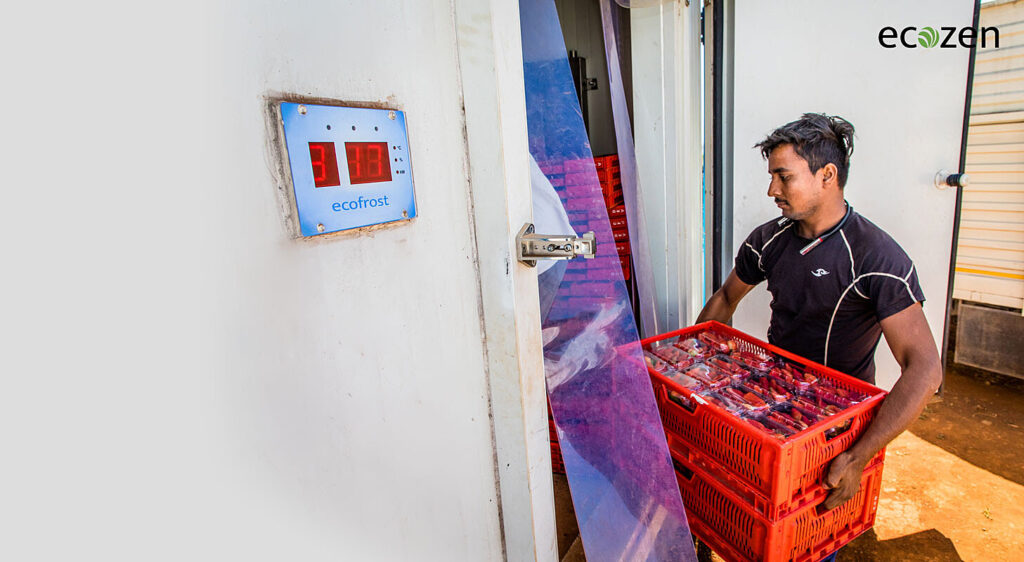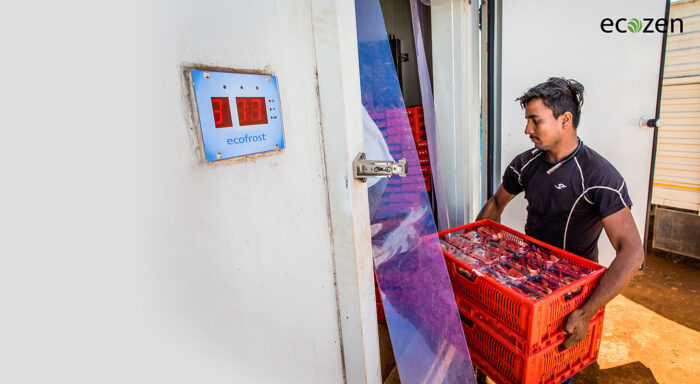The implication of prompt precooling in maintaining quality attributes and marketability of Strawberry

Strawberry (Fragaria ananassa) is valued for its unique flavour, pleasant organoleptic properties, ample nutritional traits and therefore has high commercial value. The fruit is also a rich source of vitamins, fibre, and bioactive antioxidants like polyphenols, anthocyanins, flavonoids and tannins. Strawberry, although being non-climacteric (showing no increase in the respiration rate or ethylene production during ripening) in nature, is one of the most perishable fruits.
The high perishability of strawberries is attributed to their high respiration rate (25– 50 mL CO2 kg-1h-1 at 10°C) and associated higher metabolic activity (Castello and Chiralt, 2010). The process of rapid removal of field heat from the strawberries by precooling can substantially slow down its metabolism and reduce the deterioration prior to transport and storage. Furthermore, temperature management during transportation and storage at lower temperatures (0-4°C) would further aid in maintaining the lower respiration rates of the strawberries and thereby extend its shelf life.
In fact, several studies in the past have shown the importance of prompt precooling in maintaining the quality attributes and improving the marketability of strawberries. For instance, Mitchell et al. (1996) suggested that cooling delays of 2, 4, 6, or 8 hours reduced the strawberry marketability by 20, 37, 50 and 70%, respectively, after holding the fruit at 25°C.
In another study, Pelletier et al., (2011) evaluated the commercial shipment of strawberries from harvest point (California, USA) to distribution centre (Florida, USA). The transaction had five different treatment groups i.e. prompt precooling to a final temperature of 1.7 or 10.0°C, 4 -hour delayed precooling to a final temperature of 1.7 or 10.0°C, and no precooling. Their results showed that strawberries from the prompt precooling to a final temperature of 1.7°C treatment had acceptable visual quality after the simulated retail display for 3 days at 0°C, whereas the visual quality of the fruit from the delayed or partial precooling treatments ranged from slightly poor to poor after the same period of time.
Therefore, for retaining the quality attributes and marketability of the strawberries, prompt precooling and use of optimum storage temperature (0-4°C) throughout the distribution chain is recommended.
References:
- Castelló, M. L., Fito, P. J., & Chiralt, A. (2010). Changes in respiration rate and physical properties of strawberries due to osmotic dehydration and storage. Journal of food engineering, 97(1), 64-71.
- Mitchell, F.G., E.J. Mitcham, J.F. Thompson, & N. Welch. 1996. Handling strawberries for fresh market. Univ. California, Div. Agr. Natural Resources, Publ. 2442
- Pelletier, W., Brecht, J. K., do Nascimento Nunes, M. C., & Emond, J. P. (2011). Quality of strawberries shipped by truck from California to Florida as influenced by postharvest temperature management practices. Hort Technology, 21(4), 482-493.




